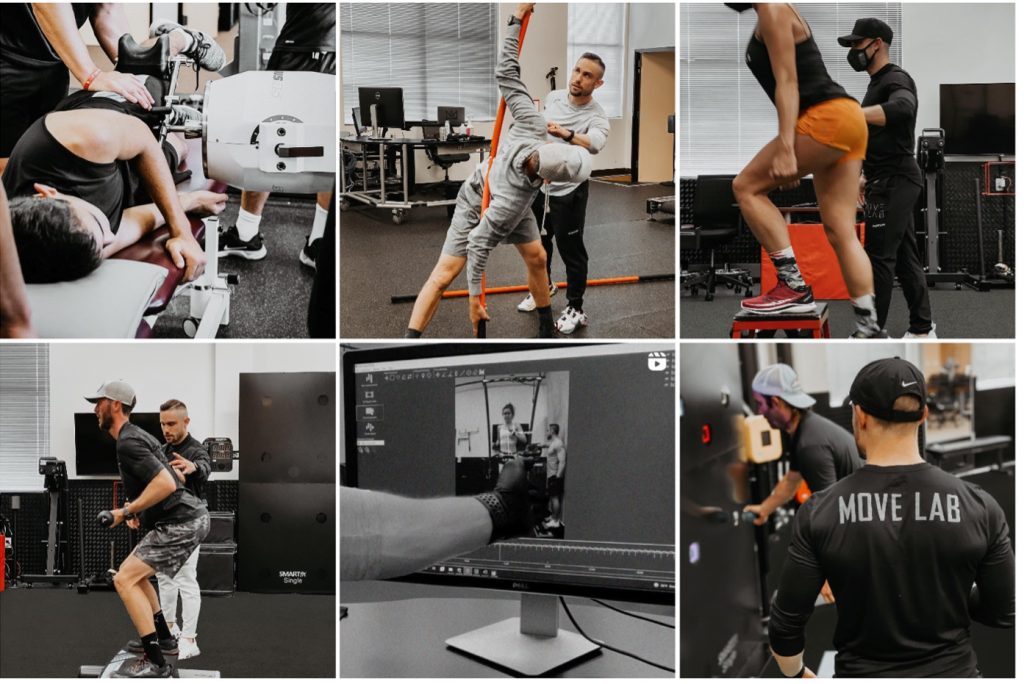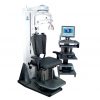
5 Steps to Better Patient Engagement
Treatment GuidelinesToday's emphasis on patient engagement represents an important shift in modern healthcare. The patient-provider relationship has become more collaborative than ever. With these patient engagement tips, you can maximize efficiency and provide better clinical outcomes.
You know that patient engagement strategies can decrease dropouts, drive better clinical outcomes, support word-of-mouth referrals, and contribute to the success of your clinic. But where do you start? Or if you know what areas need improvement, how do you make that happen at your clinic? Here you’ll find five steps to help you improve your patient engagement and specific tips to help you create better outcomes. In this article, we’ll cover:
- What is patient engagement?
- Three levels of patient engagement
- Patient engagement and clinical outcomes
- Five steps to improve patient engagement at your clinic
- Step 1: Define your vision
- Step 2: Create a culture of engagement
- Step 3: Employ the right technology and services
- Step 4: Empower patients to become collaborators
- Step 5: Chart progress and modify as necessary
What is Patient Engagement?
Simply stated, patient engagement means the patient is proactively participating in their care. It is a pivotal concept in modern healthcare that has become quite the buzzword today. At its core, patient engagement aims to inform and empower people to make decisions about their care and lifestyle that will lead to better health outcomes. This concept is a step toward a more collaborative treatment experience, rather than patients passively taking orders from providers.
Patient engagement is about empowering individuals to understand and influence their care, improve outcomes, enhance patient satisfaction, and possibly reduce healthcare costs. Obviously, the provider and the patient have the greatest impact, but it extends beyond patient-clinician interactions. In addition to patient education and participation, engagement encompasses the culture of the clinic itself, family and caregivers, and active participation of all involved.
To go a step further in defining patient engagement, this health policy brief identifies three levels of patient engagement. Watch this video for an overview of the three types of patient engagement:
Three Levels of Patient Engagement
According to the brief, there are three levels of patient engagement.1 You’ll recognize these three stages as you probably progress through them with each of your patients. First is consultation, where the patient simply receives information about the diagnosis. Second is involvement, as the patient gives input on their preferences for treatment. Third is partnership, with the patient and provider collaborating in the decision-making process. The shared decision-making accounts for the patients’ preferences, medical evidence, and your clinical judgement. 1
The goal is to get all of our patient relationships into the collaboration stage. Actively involved patients tend to have better outcomes.1 When practitioners educate patients on the diagnosis, actively listen, and give opportunities for collaboration, patients are more motivated and adherent to the program. This encourages progress and results in better outcomes for the patient.
Does Engagement Really Influence Clinical Outcomes?
Yes. Research shows that people with higher levels of engagement have better health outcomes.2 The more actively engaged, the more likely they are to return for every visit, give their best effort during exercise, follow through with home recommendations, and engage in other health-promoting behaviors. The benefits extend beyond the condition you’re treating and can make an impact on their overall health as well. A 2021 study showed that high engagement was a significant indicator of health-related quality of life.3
High Levels of Engagement Lower Healthcare Costs
In addition to better health outcomes, highly engaged patients can also enjoy the benefit of lower healthcare costs.1,4 When patients consistently show up for appointments, engage in treatment, and complete home exercise, they are progressing towards discharge faster than if they weren’t. As we’re all too aware, payers are pushing for more accountability and expecting providers to “do more with less.” In this environment, the ability to reach patient goals in fewer visits is an undeniable indicator of success.
Good Patient Relationships Promote Clinic Growth
High levels of engagement not only benefit patients, but also contribute to your clinic’s success. Doctors recognize when a patient gets positive outcomes from therapy. If you want to be at the top of their referrals list, you need to deliver outstanding care and customer service to your patients. You can achieve that by building positive relationships with them.
At the end of the day, you want to provide the best level of care to your patients. That means going the extra mile and building trust and rapport with each person you treat. Not only will it improve their clinical outcomes, but it will also make your role as a therapist that much more rewarding.
How Can I Improve Patient Engagement at my Clinic?
Whether you’re an owner, manager, or practitioner, you have a role to play. Improving patient engagement is a long-term investment in the future of your clinic. If you feel that engagement levels are particularly low at your clinic, understand that change will take time. However, the process can be enjoyable and rewarding for all involved, as you are ultimately working together for shared success.
Five Steps for Improving Patient Engagement
According to the Athena Health White Paper on patient engagement, these five steps can help a clinic strategically prioritize patient engagement:
- Define your clinic’s vision for patient engagement
- Create a culture of engagement
- Employ the right technology and services
- Empower patients to become collaborators in their care
- Chart progress and modify as necessary5
Let’s dive into each of these steps and learn how you can apply this process at your clinic.
1. Define Your Clinic’s Vision for Patient Engagement
The first step to improving patient engagement is to define your vision for what the best possible patient engagement looks like. This step will help you clarify your goal and guide future decisions to achieve it. Crafting this vision requires introspection, foresight, and honesty. To help get the ideas flowing, ask questions like:
- In a perfect world, what does the ideal patient relationship look like?
- Are there specific behaviors or indicators of high patient engagement?
- What elements of that ideal scenario are missing from my clinic or my patient relationships? What parts are we already successful with?
- What are the current barriers to patient engagement within our clinic, and how can we address those?
- How can we leverage technology to increase satisfaction and engagement?
- What are the training and resource needs of our staff to carry out this endeavor?
- How do we measure success?
Actively Seek Input from Staff
Perhaps one of the most fruitful sources of feedback is your staff. They’ll know firsthand what helps, what gets in the way, and most importantly, what would help make improvements. Frontline staff like clinicians and administrative personnel often have the closest interactions with patients. They can offer valuable insights into their needs, preferences, habits, and other factors that influence satisfaction and behavior. These members of your staff witness firsthand the everyday challenges patients face and can identify areas for improvement.
Have open discussions to address these points and define your shared goals for the future. Engaging in regular discussions with teammates can generate innovative ideas and conclusions that you alone may not think of. This could take the form of structured brainstorm sessions, anonymous suggestion box, or regular team meetings devoted to the topic. Getting input and buy-in from everyone involved is crucial for success.
2. Create a Culture of Engagement
Improving patient engagement should be an all-hands effort. Everyone from scheduling to billing has a role, and it looks different for each person in your clinic. Providing excellent service at every touchpoint is the cornerstone of patient-centered care.
A clinic with an internal environment of openness, respect, and trust naturally extends that atmosphere to patient relationships. This culture must be embodied by all staff, including clinical and administrative roles. Each person in your clinic needs to understand and support the patient’s role as a partner in care.
Establishing Trust
As a rehab professional, establishing a sense of trust is extremely important. Building trust helps the patient believe in the efficacy of your treatment, increases compliance, enhances communication, and prevents early dropouts. For example, many people become fearful if they experience discomfort during treatment. If unaddressed, that fear could lead to hesitation, physical compensation during exercise, or non-compliance. But with a trusting relationship, they will be able to communicate those feelings, make adjustments, and keep progressing at your recommendation.
Prioritizing Patient Care
As for your clinical staff, they should follow the well-known best practices of patient care. These include good listening and questioning skills, limiting medical jargon, personalizing treatment, educating patients, and many more. These may sound rather obvious, but it’s worth noting, as creating a solid relationship with patients is key to their success and to the clinic’s.
Much of that groundwork happens in the first session. In fact, first-session interactions are so crucial that researchers set out to find the best way to manage patient expectations for success. This study identified the top four questions patients expect to be answered in their first session.6 Read The 4 Things Patients Expect From You to learn how to support patient engagement starting with the first session.
3. Employ the Right Technology and Services
With modern technology, it’s easier than ever to make the patient experience… well, easier than ever. Not only does it streamline operations, but it also greatly enhances the patient experience. When implemented thoughtfully, the right technology can foster a seamless and mutually beneficial connection between patients and providers, creating an experience that is both efficient and patient-centered.
Administrative Enhancements
The modern patient experience relies on seamlessly integrated technology and software.
Starting before the first appointment, your website is the virtual front door of your clinic. It should be easy to navigate, give thorough explanation of your services, and provide a clear path to book an appointment. Online scheduling allows patients to book their appointments at their convenience. Along with automated reminders, a digital booking system saves everyone time and nudges patients to adhere to attend follow-up visits.
Billing and payment is often a cumbersome part of the healthcare experience, for both the clinic and the patients. This is an area that many clinics can improve with online payment portals. User-friendly payment portals should be easy to use regardless of technical skill level with built-in instructions for use. A simple, straightforward interface will minimize confusion and frustration, reducing the burden on staff who would otherwise have to assist patients with payment issues.
In addition to ease of use, payment systems should offer flexibility and transparency. Flexibility to use various payment methods, such as credit and debit cards, HSAs, automatic payments, and payment plans. Patients should have the ability to view itemized bills that show what their insurance covers and out-of-pocket costs. This transparency is essential in avoiding surprises that could lead to dissatisfaction and disengagement.
Advanced Clinical Technology
Beyond administrative conveniences, the modern patient expects technology in treatment. Integrating high-tech tools in treatment is not a luxury, but a necessity for clinics aiming to maintain competitiveness and relevance in today’s fast-evolving healthcare landscape. The treatment experience must meet patient expectations of modern healthcare, including personalized care plans, advanced technology, and concrete proof of progress. State-of-the-art medical devices offer great precision in evaluations and treatment that keep clients engaged.
Your sessions should offer the latest evidence-based technology available. Each session should provide value that patients can’t get anywhere else. Patients that eagerly return for your clinic’s unique offerings is the highest mark for patient engagement.
At BTE, patient engagement through clinically advanced technology is one of our core principles. Our products offer evidence-based treatment and evaluation with the high-tech edge that patients value. We know that clinical technology drives patient engagement and revenue growth because we’ve done it. Our customers report lower attrition, higher engagement, and explosive business growth thanks to data-driven technology. When clinics start using our objective evaluation and treatment systems, they get results like this:
“Patients love the interactive game experience, and are motivated by their visible progress to keep coming back for more sessions, getting stronger and returning to function.” – Scott Romanowski, Director of Rehabilitation at Vereen Rehabilitation Center
“The objective data clearly shows patient progress and evidence for our recommendations. It’s a terrific marketing tool that helps us get more referrals.” –Rich Douglas, Center Manager of NovaCare Rehabilitation
“I know that this device brings in more business because it is objective, it is very scientific, and it shows a commitment to a greater level of care.” – Dr. Edo Zylstra, Owner of KinetaCare
Case Study: Technology Keeps Patients Engaged for More Return Visits and Better Clinical Outcomes
NovaCare Rehabilitation in Northfield, NJ, offers a broad variety of services to their patients. They provide physical, occupational, and aquatic therapy, as well as concussion management and work conditioning. This very successful multi-disciplinary clinic has built its business through truly understanding the value of patient engagement and by making the patient experience its primary focus.
Key to the clinic’s engagement-centric mission, Center Manager Rich Douglas places an emphasis on investing in the latest technology to give his patients a unique experience they cannot get anywhere else. Specifically, NovaCare Northfield provides patients interactive rehabilitation with the BTE PrimusRS. Rich is effusive about how much Primus helps his clinicians provide personalized care. “Patients don’t like to do the same thing each day. They are coming for individualized care, not cookie-cutter care. With all the attachments and hundreds of set-ups, Primus can simulate any task.”
Since 2001, the clinic has leveraged this engaging technology to provide the best possible interactive care to its patients. And the results speak for themselves. “Patients are coming back to the center more often when they work with Primus,” Rich states. “They like the technology, seeing the results and tracking their improvement on the screen. They want to come back next time to get better results, as the goal is to improve performance at each session. This technology gives them something they cannot replicate at home or at other physical rehabilitation centers in the area.”
4. Empower Patients To Become Collaborators
Research shows that stronger patient engagement leads to better clinical outcomes. The more actively involved the patient is, the better. Not all patients come in ready to actively collaborate. You can help get them there with patient education, being mindful of language, managing expectations, and possibly involving family members. More on each of those next.
Patient Education
“Patient education” has become synonymous with patient engagement strategies. Educational empowerment is about providing the knowledge patients need to make informed health decisions. Educating your patient on their condition empowers the patient, builds trust, encourages cooperation, and encourages collaboration.
Some patients need to be “convinced” that your approach is effective. Explaining how a particular intervention works to address the condition is a powerful motivator. Even if they aren’t skeptical, a little education goes a long way in boosting their trust in you and confidence in the treatment plan.
Speaking of skeptical patients, have you ever dealt with a patient who was particularly stubborn, argumentative, or even disruptive? Chances are, you have dealt with difficult patients many times in your practice. You’ll need a different approach to deal with this type of patient relationship. Check out our recent article: Ten Tips for Dealing with Difficult Patients.
In addition to conversations during treatment, think about providing educational resources on your website and social media. A clinic’s online presence is an invaluable educational opportunity. With educational content on your website and social media, patients can take in the information at their own pace. Examples include articles about specific conditions, the mechanisms and benefits of certain treatments, demonstrations of exercises or interventions. Interactive content like quizzes and self-assessments can further engage patients in learning about their health.
Case Study: Driving Digital Patient Engagement
Patient engagement does not stop or even necessarily start inside your clinic. In today’s healthcare landscape, it is important to engage both existing and prospective patients in their digital habitat as well. We know every clinic needs a good website, but leveraging the power of social media is perhaps the most powerful driver for patient education and engagement available to you today. Your patients are spending hours scrolling on their mobile devices, following and sharing content that speaks to them. Why shouldn’t your clinic be one of their regular stops in the digital realm? Becoming active on social brings new patients into the fold and keeps existing patients abreast of new modalities and services your clinic offers.
One clinic that takes patient engagement to the next level is Move Lab LA. They’ve built their unique identity around cutting-edge technology that optimizes health outcomes. With the PrimusRS and other advanced clinical tools, Move Lab provides a data-driven experience that keeps clients motivated and engaged in their rehabilitation journey.
In addition to offering unique care with PrimusRS inside their clinic, they have made it a priority to build and maintain a strong, engaged, social media following. This way they can connect with their community on their phones, in a continuous and organic way. Check out @MoveLabLA on Instagram to see how this clinic leverages their clinical technology into an engaging and on-brand social presence that helps educate and motivate their patients outside the clinic.

The beauty of social media is that you can literally do it yourself, for no cost. Start small, spread word of mouth, patient by patient in your clinic by inviting them to follow you. Then, simply post useful snippets of information, photos and short videos of unique exercises, and anything else your patients may find useful. And you can always find third party content to re-share , perhaps adding your own brief commentary to it. It doesn’t have to be hard, and it doesn’t have to be time consuming. The important thing is to start and to stick with it, slowly building it up to benefit your patients and your clinic. Learn more about social media marketing for clinics in our guide: Everything You Need To Build a Clinic Marketing Strategy.
Talk the Talk
One succinct patient engagement tips is – Get patients talking more. Especially during the first visit, the patient should do most of the talking. If you listen carefully, you’ll get clues that will help guide you. Patients’ word choice can tell you a lot about their understanding of the condition, what they think will help, and their willingness to change behaviors. Particularly about behaviors – it’s best when the idea to change or add something to their routine comes from the patient themselves.7 Keep asking questions to guide them to positive solutions, and they’ll be more likely to follow through.
Speaking of speaking, there are times when you should refrain. That is, avoid interrupting patients when they’re talking about the condition. A recent study showed that 25% of healthcare providers interrupted speaking patients after only 12 seconds.8 More interruptions resulted in a less favorable experience for the patients. No one feels engaged in a conversation when they keep getting interrupted. It is extremely important that the patient feels heard.
Managing Mindset and Expectations
Beyond the diagnosis, you may need to help clients frame their mindset about the recovery process in general. Early on, many patients are afraid of working the injured area. You can acknowledge their sensitivity while still encouraging progressive exercise.
All too often, patients have unrealistic expectations about their recovery. Naturally, unmet expectations can lead to frustration, attrition, or ultimately not achieving their goals. For tips on helping patients through this situation, read What To Do When Your Patient Is Making Slow Progress.
Involve Family and Caregivers
When dealing with an injury, most people turn to family for support. If your patient is struggling with motivation or needs certain interventions at home, you may want to include family members in your care plan. Family and caregivers can be a valuable support network if you engage them. It may not apply to all cases, but family can often provide accountability for home exercises. Their involvement can keep patients engaged and boost confidence for some.
This could be as simple as allowing a family member to sit nearby and watch sessions. Some clinics have a waiting area with a window into the treatment area. Another way to encourage support is by providing a progress report. Patients love having concrete evidence of their progress like a report card they can hang on the fridge.
One clinic that has seen great success with this tactic is Novacare Rehabilitation in Northfield, NJ. Under the direction of manager Rich Douglas, this clinic achieves high levels of engagement thanks to the unique progress reports from the PrimusRS. Progress reports show changes over time in strength, range of motion, and functional performance. Detailed charts and graphs show exactly how the patient progresses session by session.
“They like the technology, seeing the results and tracking their improvement on the screen. They want to come back next time to get better results, as the goal is to improve performance at each session,” says Douglas.
5. Chart Progress and Modify as Necessary
Just as you would with treatment, you should evaluate your patient engagement efforts periodically. A combination of staff feedback and quantifiable metrics will give an overall indicator of your engagement success. Check in with your staff to learn how the initiatives are going, if they need help implementing certain changes, and any other feedback they have.
If you do surveys or Net Promotor Score, you should see positive results over time. Digital platforms like blogs, social media, and patient portals have built-in metrics that show online engagement.
Tracking progress over time helps you understand what’s working and what’s not. Be prepared to change your approach. Especially with new initiatives, it’s important to keep the shared end-goal in mind and be flexible with how you get there. This will ensure that your efforts result in meaningful improvement for your patients, staff, and business.
Conclusion
Supporting patient engagement should be a continual priority for your clinic. Many of the strategies mentioned here benefit your patients, staff, and business in more ways than one. To recap those strategies – set your goals as a team, make patient engagement part of the culture, use technology to make life easier, collaborate with patients, and monitor progress.
For more practice management and treatment tips, subscribe to TherapySpark for helpful content delivered to your inbox monthly.
Janna Jacobs, PT, CHT, CEAS, CDP
Senior Clinical Research Specialist
BTE
References
- James, J. 2013. Health Policy Brief: Patient Engagement. HealthAffairs. https://www.healthaffairs.org/do/10.1377/hpb20130214.898775
- Centers for Disease Control and Prevention. (n.d.). Research and evaluation on health literacy and patient engagement. CDC. https://www.cdc.gov/healthliteracy/researchevaluate/patient-engage.html
- Street, R. L. (2021). A model of patient-centered communication for research, training, practice, and skills assessment. Journal of Communication in Healthcare, 14(3), 147–155. https://doi.org/10.3928/24748307-20210524-02
- Greene, J., et al. (2015). When patient activation levels change, health outcomes and cost change, too. Health Affairs, 34(3)431-7. https://pubmed.ncbi.nlm.nih.gov/25732493/
- Athena Health. 2014. 5 Elements of a Successful Patient Engagement Strategy. White Paper. https://www.athenahealth.com/white-papers/patient-engagement-strategy
- Subialka, J., et al. 2022. What do patients referred to physical therapy for a musculoskeletal condition expect? A qualitative assessment. Musculoskeletal Science & Practice. Vol 59. https://doi.org/10.1016/j.msksp.2022.102543
- Davenport, T. 2017. 9 Secrets to Successful Patient Engagement. MEDBRIDGE. https://www.medbridge.com/blog/2017/08/9-patient-engagement-tips-may-not-think/
- Rhoades DR, McFarland KF, Finch WH, Johnson AO. Speaking and interruptions during primary care office visits. Fam Med. 2001 Jul-Aug;33(7):528-32. PMID: 11456245. https://pubmed.ncbi.nlm.nih.gov/11456245/





